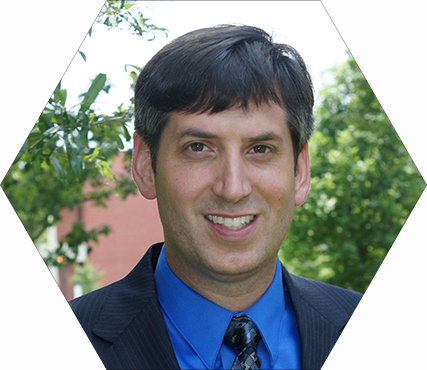Education
- Ph.D., Iowa State University, 2006
- M.S., Iowa State University, 2003
- B.S., Iowa State University, 1999
Background
Dr. Loutzenhiser joined the faculty of the Georgia Institute of Technology as an Assistant Professor in May 2012. Previously, he worked as a Lecturer and Research Associate at the Swiss Federal Institute of Technology (ETH), Zurich, Switzerland. During this time, he continued research that he initiated during his postdoctoral fellowship at the Paul Scherrer Institute, Villigen PSI, Switzerland. Dr. Loutzenhiser received his Ph.D. in Mechanical Engineering while working at the Swiss Federal Laboratories for Materials Testing and Research (EMPA), Duebendorf, Switzerland, within the framework of the International Energy Agency Solar Heating and Cooling Programme, Task 34.
Research
- Heat Transfer, Combustion, and Energy Systems: Solar fuels and technologies, radiative heat transfer, and thermodynamic and kinetic analyses.
Dr. Loutzenhiser’s primary research focuses on concentrating and storing sunlight in a chemical form, i.e., solar fuels. Solar fuels, such as H2 and CO, can greatly reduce or even alleviate worldwide dependency on fossil fuels while efficiently storing diffuse, intermittent sunlight. The combination of H2 and CO constitutes synthesis gas: the key ingredient for producing renewable liquid hydrocarbon fuels via Fischer-Tropsch or other catalytic reforming processes needed to power the transportation sectors.
Dr. Loutzenhiser is currently examining two solar pathways for synthesis gas production: 1) Synthesis gas from mixtures of CO2 and H2O in novel two-step thermochemical cycles via ceria-based partial redox reactions and Zn/ZnO redox reactions and 2) Solar gasification of carbonaceous materials, e.g., coal, algae, wood, etc. resulting in synthesis gas.

Dr. Loutzenhiser’s research emphasizes applying fundamental phenomena of thermodynamics, chemical kinetics, and combined heat and mass transfer to real-world engineering applications in solar thermochemistry. The results garnered from his research provide the underlying building blocks for the development and refinement of solar technologies. The broad scope of his research affords numerous opportunities for cross-disciplinary interactions in material science and engineering, chemical engineering, and chemistry.
Students affiliated with Dr. Loutzenhiser’s group can anticipate working on projects coupling theoretical and experimental aspects of solar thermochemistry. The elementary findings will be used to determine design constraints for the development, refinement, fabrication, and testing of novel solar technologies. Students will perform experiments in a state-of-the-art research laboratory situated in the new Georgia Tech Carbon Neutral Energy Solutions Laboratory. The laboratory features a high-flux solar simulator that consists of an array of seven 6 kWe high-pressure Xenon arc lamps that closely approximate the heat transfer characteristics of high concentration solar facilities (e.g., solar power towers and solar dishes) and allow for reproducible experimentation essential for the development of solar technologies.
Students working with Dr. Loutzenhiser can expect to contribute at an international level by publishing their research results in peer-reviewed journals and attending and presenting at international conferences. In addition to developing and refining their analytical skills, students will develop and improve their communication skills, both written and oral, to facilitate clear and concise dissemination of their scientific findings.
- TMS Best Paper Award in the Energy Division, 2012
- Editorial board of Materials, 2010-present
- ASME Solar energy division technical chair for Solar Fuels, 2009-2012
- ASME member, 2009-present
- Track and session chairs for Solar Chemistry Track
- ASME 5th International Conference on Energy Sustainability, Washington D.C., USA, August 7-10, 2011
- ASME 4th International Conference on Energy Sustainability, Phoenix, AZ, USA, May 17-22, 2010
- Member of the Solar Facilities for the European Research Area (SFERA) user selection panel, 2010-2012
- ASHRAE student member, 1998-2005
- Iowa State University Preparing Future Faculty Associate, 2004
- Iowa State Chapter of Pi Tau Sigma, 1998
Representative Publications
- A. Stamatiou, P.G. Loutzenhiser, and A. Steinfeld. 2012. Syngas production from H2O and CO2 over Zn particles in a packed-bed reactor. AIChE Journal 58, 625-631
P.G. Loutzenhiser and A. Steinfeld. 2011. Solar syngas production from CO2 and H2O in a two-step thermochemical cycle via Zn/ZnO redox reactions: Thermodynamic cycle analysis. International Journal of Hydrogen Energy 36, 12141-12147 - P.G. Loutzenhiser,A. Stamatiou, W. Villasmil, A. Meier, and A. Steinfeld. 2011. Concentrated solar energy for thermochemically producing liquid fuels from CO2 and H2O. JOM 63, 32-34
- P.G. Loutzenhiser, F. Barthel, A. Stamatiou, and A Steinfeld. 2011. CO2 reduction with Zn particles in a packed-bed reactor. AIChE Journal 57, 2529–2534
- P.G. Loutzenhiser, A. Meier, A. Steinfeld. 2010. Review of the two-step H2O/CO2 splitting solar thermochemical cycle based on Zn/ZnO redox reactions. Materials 3, 4222-4938
- P.G. Loutzenhiser, O. Tuerk, and A. Steinfeld. 2010. Production of Si by vacuum carbothermal reduction of SiO2 using concentrated solar energy. JOM 62, 49-54
- A. Stamatiou, P.G. Loutzenhiser, and A. Steinfeld. 2010. Solar syngas production from H2O and CO2 via two-step thermochemical cycles with Zn/ZnO and FeO/Fe3O4 redox reactions: Kinetic analysis. Energy & Fuels 24, 2716–2722
- A. Stamatiou, P.G. Loutzenhiser, and A Steinfeld. 2010. Solar syngas production via H2O/CO2-splitting thermochemical cycles with Zn/ZnO and FeO/Fe3O4 redox reactions. Chemistry of Materials 22, 851-859
- P.G. Loutzenhiser, M.E. Gálvez, I. Hischier, A. Graf, and A. Steinfeld. 2010. CO2 splitting in an aerosol flow reactor via the two-step Zn/ZnO solar thermochemical cycle. Chemical Engineering Science 65, 1855-1864
- P.G. Loutzenhiser, M.E. Gálvez, I. Hischier, A. Stamatiou, A. Frei, and A. Steinfeld. 2009. CO2 splitting via two-step solar thermochemical cycles with Zn/ZnO and FeO/Fe3O4 redox reactions II: Kinetic analysis. Energy & Fuels 23, 2832-2839
- M.E. Gálvez, P.G. Loutzenhiser, I. Hischier, and A. Steinfeld. 2008. CO2 splitting via two-step solar thermochemical cycles with Zn/ZnO and FeO/Fe3O4 redox reactions: Thermodynamic analysis. Energy & Fuels 22, 3544-3550

